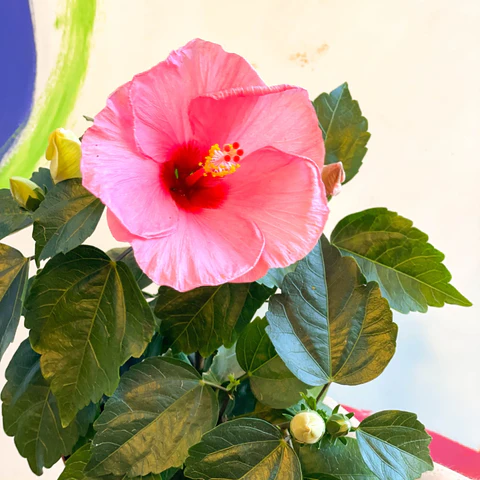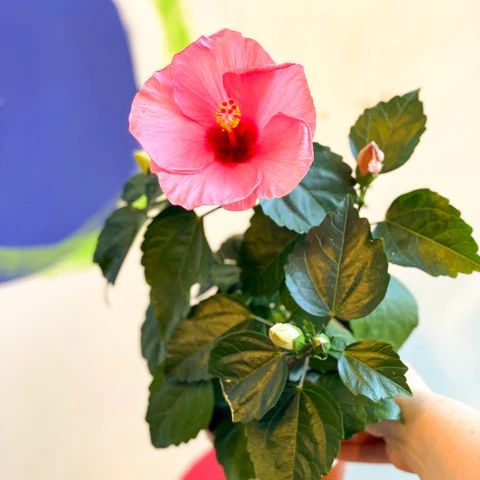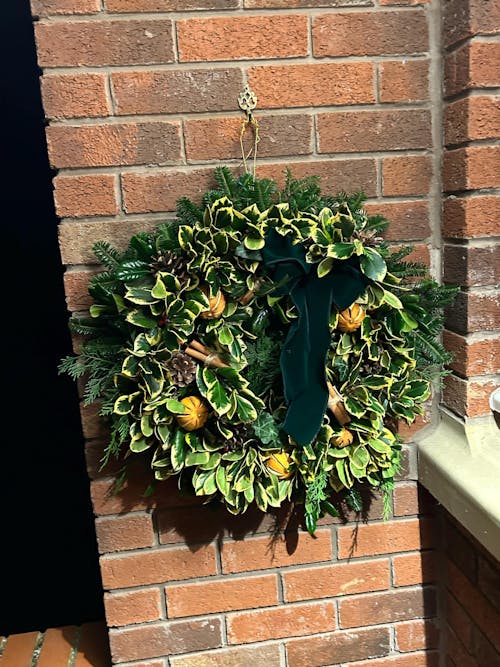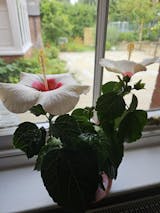This plant's dark green, glossy leaves are crowned with bright, trumpet-like flowers in shades of pink, orange, white and yellow. This plant is ideal for a bright, humid room, and needs to be somewhere cooler in winter to get a good dormancy period and increase chances of blooming in the following Spring. This beautiful plant will bring a little of the garden indoors as it blooms throughout the summer and into autumn, filling your house with colour and beauty. They don't need lots of sun; in fact, they're happiest in indirect light, and as long as you can give them some humidity they will love to thrive and bring you flowers spring after spring.
Scientific Name
Hibiscus rosa-sinensis (hibiscus plant, rose of China)
Common Name
Chinese Hibiscus, China Rose, Hawaiian Hibiscus, Rose Mallow, Shoeblack Plant, Tropical Hibiscus
Origin
This plant is probably native to tropical Asia, although it has not been found growing wild in modern times.
Light
Likes bright but indirect light; make sure it gets plenty of light without being in very strong sun.
Water
Your Hibiscus will love to be kept lightly moist, water when only the top few centimetres have dried out. Your plant will wilt if it's too thirsty; if it's wilting often, repotting into a bigger pot can help. Your plant will need less water in winter when it isn't growing, so be careful not to over-water it in the cooler months!
Humidity
Tropical Hibiscus like these love high humidity, so somewhere like a kitchen or bathroom would be ideal. Increase humidity with a pebble tray where needed.
Soil
Use a well-draining mix to keep your hibiscus happy and not waterlogged; a mix with coir and sand, or one designed for ferns, will work well here. Repot every 2-3 years in Spring.
Food
Feed every week or two during the growing period, using a fertiliser high in potash to promote flowering.
Temperature
Temperatures between 18-24°C in the day are ideal for your hibiscus; in winter, make sure it gets a dormancy period in cooler temperatures, though still not below 7°C.
Pet-safe
Yes, this plant is non-toxic for pets; the flower is edible for humans too, and often used in salads in the Pacific Islands!
Sprouts Top Tips
Make sure it has a dormancy period over winter, with lower temperatures (though still keep above 7°C), less water and consistent humidity. Prune in early spring before new growth to keep your plant tidy. The main key here is to keep it humid!
















![The 'Hot Toddy' Fresh Foliage Christmas Wreath [Made to Order]](https://cdn.shopify.com/s/files/1/0490/2774/3905/products/the-hot-toddy-fresh-foliage-christmas-wreath-240111_500x500.jpg?v=1637626402)










